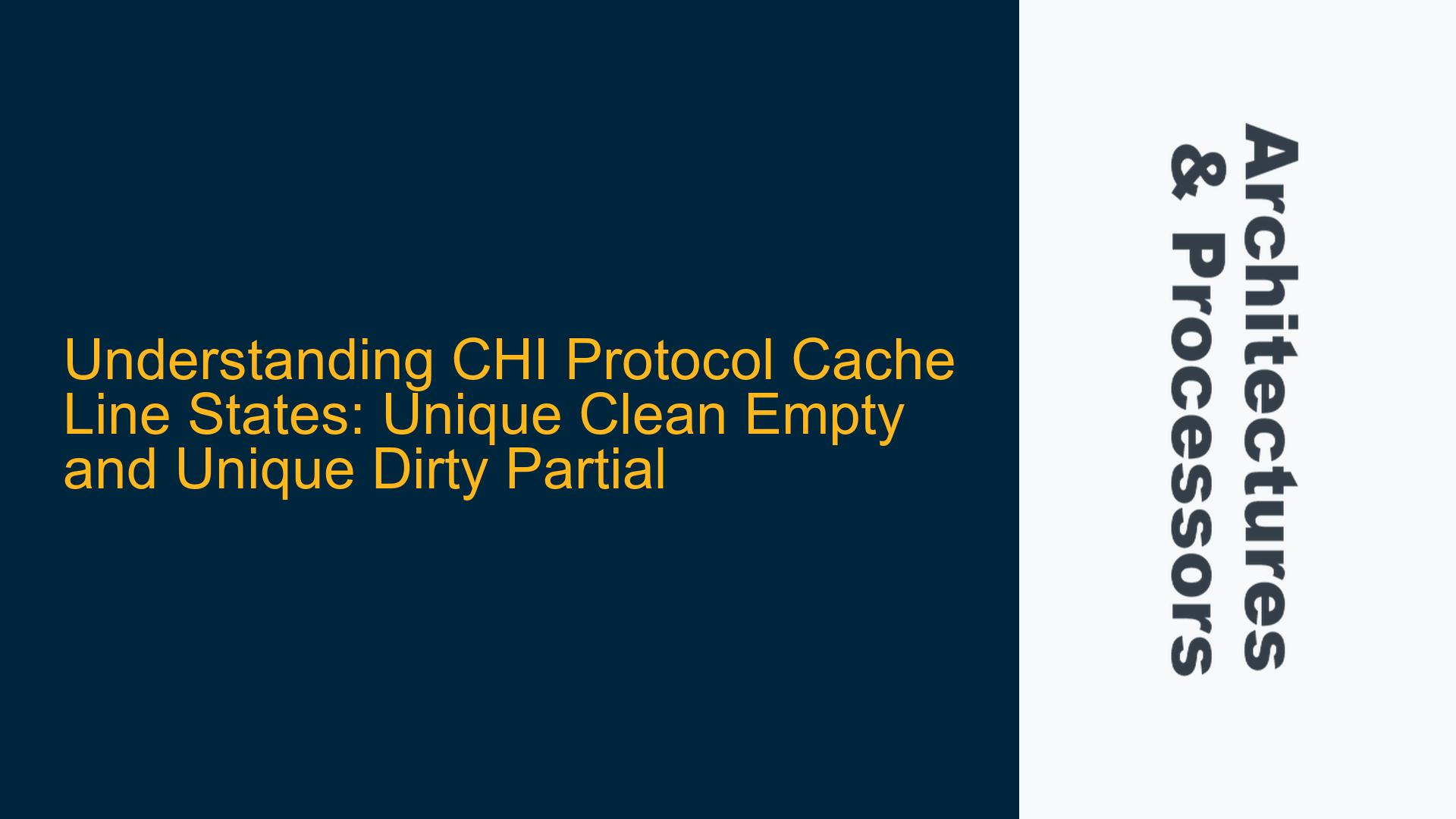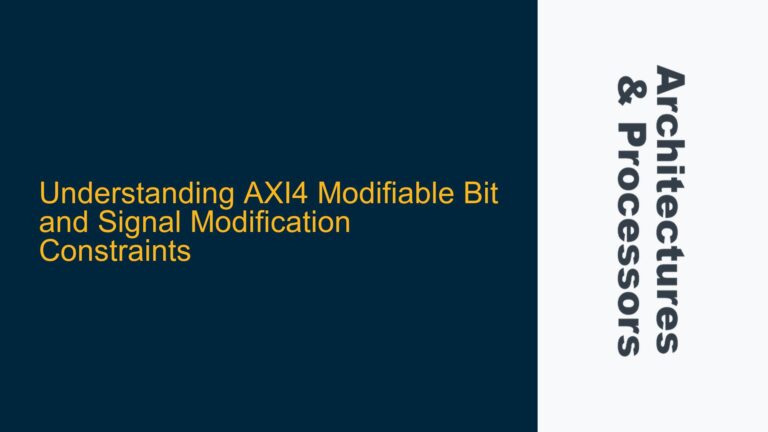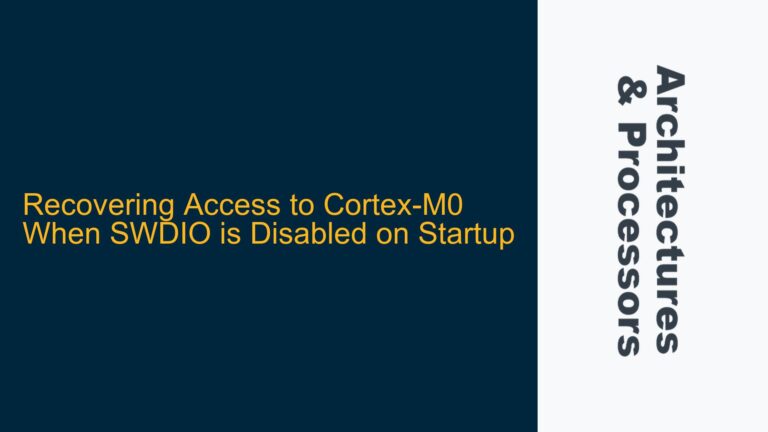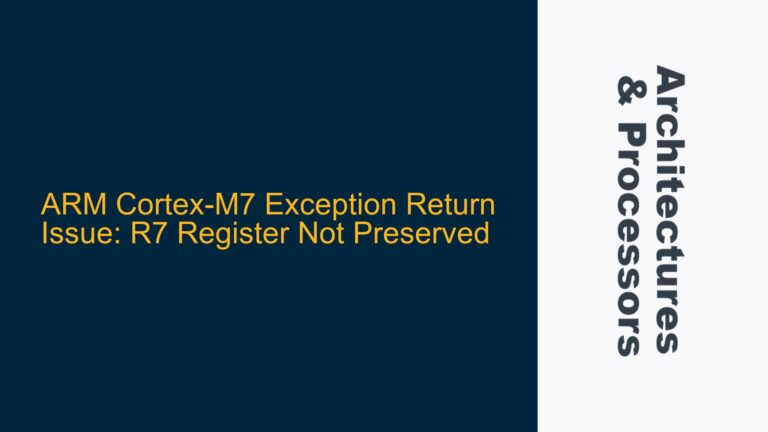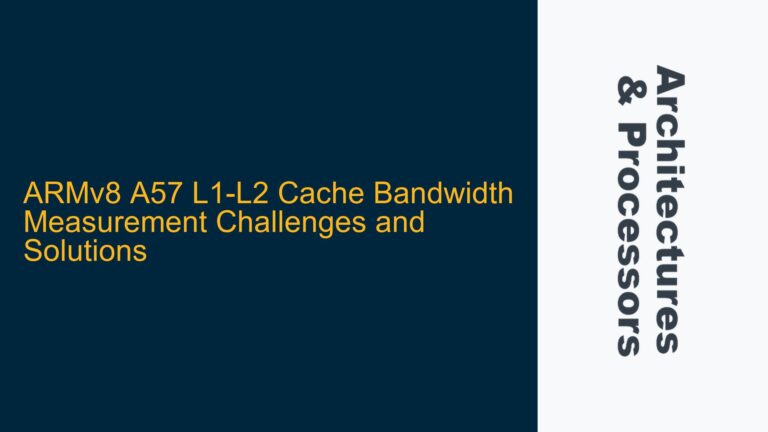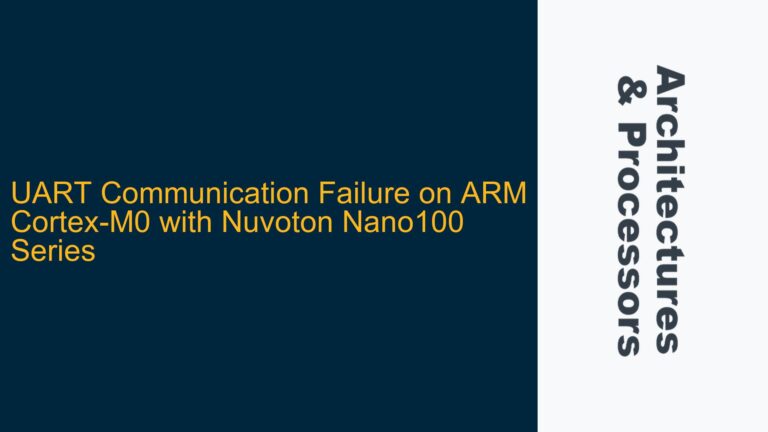ARM CHI Protocol Cache Line State Transitions and Their Significance
The ARM Coherent Hub Interface (CHI) protocol introduces two additional cache line states compared to the AXI protocol: Unique Clean Empty (UCE) and Unique Dirty Partial (UDP). These states are critical for optimizing cache coherency, reducing unnecessary data transfers, and improving system performance in complex ARM-based SoCs. The UCE and UDP states address specific scenarios in cache management, particularly in systems with multiple Request Nodes (RNs) and distributed memory hierarchies. Understanding these states requires a deep dive into the CHI protocol’s cache coherency mechanisms, the role of snoop transactions, and the granularity of cache line management.
The UCE state is used to indicate that a cache line is uniquely owned by an RN but does not contain valid data. This state is particularly useful in scenarios where an RN needs to guarantee exclusivity over a cache line without actually holding the data. For example, during a CleanUnique transaction, if the RN loses the cache line due to a snoop invalidation before the transaction completes, the cache line transitions to the UCE state. This ensures that no other RN holds a copy of the cache line, but the initiating RN does not retain any data for it. The UCE state is a powerful tool for maintaining coherency without unnecessary data movement, reducing bandwidth usage and latency.
The UDP state, on the other hand, allows for finer granularity in managing dirty cache lines. In traditional cache coherency protocols, a dirty cache line implies that the entire line has been modified and must be written back to memory. However, in many real-world scenarios, only a portion of the cache line may be dirty. The UDP state enables an RN to track which parts of the cache line are dirty and only write back the modified portions. This is particularly beneficial in systems with large cache lines or where partial writes are common, as it minimizes the amount of data that needs to be written back to memory, reducing power consumption and improving performance.
Memory Hierarchy and Snoop Transactions in CHI Protocol
The introduction of the UCE and UDP states in the CHI protocol is closely tied to the memory hierarchy and the role of snoop transactions. In a multi-RN system, maintaining cache coherency requires a robust mechanism for tracking the state of cache lines across all RNs. Snoop transactions are used to propagate changes in cache line states and ensure that all RNs have a consistent view of memory. The UCE state plays a critical role in this process by allowing an RN to assert exclusivity over a cache line without retaining the data, ensuring that no other RN can hold a conflicting copy.
For example, consider a scenario where RN-A issues a CleanUnique transaction for a cache line. Before the transaction completes, RN-B issues a snoop invalidation for the same cache line. If RN-A loses the cache line due to the snoop invalidation, the cache line transitions to the UCE state upon completion of the CleanUnique transaction. This ensures that RN-A has exclusive ownership of the cache line but does not hold any valid data, preventing any potential coherency violations. The UCE state thus acts as a placeholder, allowing RN-A to maintain exclusivity without unnecessary data retention.
The UDP state, meanwhile, is particularly useful in systems with distributed memory hierarchies, where cache lines may be shared across multiple RNs. In such systems, partial writes to a cache line are common, and the UDP state allows an RN to track which portions of the cache line have been modified. This granularity is crucial for optimizing write-back operations, as it enables the RN to only write back the dirty portions of the cache line, reducing bandwidth usage and improving system performance. For example, if only 32 bytes of a 64-byte cache line are dirty, the RN can issue a WriteBackPtl transaction instead of a full WriteBack, significantly reducing the amount of data that needs to be written back to memory.
Implementing UCE and UDP States in SystemVerilog and UVM
Implementing the UCE and UDP states in an ARM-based SoC requires careful consideration of the cache coherency protocol, the memory hierarchy, and the specific requirements of the system. In SystemVerilog, the cache line states can be modeled using enumerated types, with additional logic to handle state transitions and snoop transactions. For example, the UCE state can be implemented as follows:
typedef enum logic [2:0] {
INVALID,
SHARED_CLEAN,
SHARED_DIRTY,
UNIQUE_CLEAN,
UNIQUE_DIRTY,
UNIQUE_CLEAN_EMPTY,
UNIQUE_DIRTY_PARTIAL
} cache_state_t;
The state transitions can be implemented using a finite state machine (FSM), with specific logic to handle snoop transactions and write-back operations. For example, the transition to the UCE state can be triggered by a snoop invalidation during a CleanUnique transaction:
always_ff @(posedge clk or posedge reset) begin
if (reset) begin
cache_state <= INVALID;
end else begin
case (cache_state)
UNIQUE_CLEAN: begin
if (snoop_invalidate && clean_unique_complete) begin
cache_state <= UNIQUE_CLEAN_EMPTY;
end
end
// Other state transitions
endcase
end
end
In UVM, the UCE and UDP states can be verified using a combination of directed and random tests. Directed tests can be used to verify specific scenarios, such as the transition to the UCE state during a CleanUnique transaction, while random tests can be used to explore corner cases and ensure robustness. For example, a directed test for the UCE state might look like this:
task test_uce_state();
// Issue CleanUnique transaction
issue_clean_unique();
// Issue snoop invalidation
issue_snoop_invalidate();
// Wait for CleanUnique to complete
wait_for_clean_unique_complete();
// Verify cache state is UCE
assert_cache_state(UNIQUE_CLEAN_EMPTY);
endtask
Random tests can be used to explore scenarios where multiple RNs are accessing the same cache line, with varying degrees of contention and partial writes. These tests can be particularly useful for verifying the UDP state, as they can generate a wide range of partial write scenarios and ensure that the cache coherency protocol handles them correctly.
Optimizing Bus Fabric Configurations for UCE and UDP States
The UCE and UDP states have significant implications for bus fabric configurations, particularly in systems with multiple RNs and distributed memory hierarchies. The UCE state reduces the need for unnecessary data transfers, as it allows an RN to maintain exclusivity over a cache line without retaining the data. This can significantly reduce bandwidth usage and improve system performance, particularly in systems with high levels of contention for cache lines.
The UDP state, meanwhile, allows for more efficient write-back operations, as it enables an RN to only write back the dirty portions of a cache line. This can reduce power consumption and improve performance, particularly in systems with large cache lines or where partial writes are common. To fully leverage the benefits of the UDP state, the bus fabric must be configured to support partial write-back operations, with appropriate logic to handle the granularity of dirty bits.
For example, in a system with 64-byte cache lines, the bus fabric might be configured to support 8-byte granularity for write-back operations. This would allow an RN to issue a WriteBackPtl transaction for any 8-byte segment of the cache line that is dirty, rather than writing back the entire 64-byte line. This requires additional logic in the bus fabric to track dirty bits at the appropriate granularity and handle partial write-back transactions.
Resolving DFT and Power Domain Challenges with UCE and UDP States
The UCE and UDP states also have implications for Design-for-Test (DFT) and power domain management. The UCE state can simplify DFT by reducing the number of cache lines that need to be tested, as it allows an RN to maintain exclusivity over a cache line without retaining the data. This can reduce the complexity of test patterns and improve test coverage.
The UDP state, meanwhile, can improve power domain management by reducing the amount of data that needs to be written back to memory. This can reduce power consumption, particularly in systems with large cache lines or where partial writes are common. However, it also requires careful management of dirty bits and write-back operations, particularly in systems with multiple power domains.
For example, in a system with multiple power domains, the UDP state must be carefully managed to ensure that dirty bits are correctly tracked and written back before a power domain is shut down. This requires additional logic to handle power domain transitions and ensure that all dirty data is correctly written back to memory. This can be particularly challenging in systems with distributed memory hierarchies, where cache lines may be shared across multiple power domains.
Conclusion
The Unique Clean Empty (UCE) and Unique Dirty Partial (UDP) states in the ARM CHI protocol are powerful tools for optimizing cache coherency, reducing unnecessary data transfers, and improving system performance in complex ARM-based SoCs. The UCE state allows an RN to maintain exclusivity over a cache line without retaining the data, reducing bandwidth usage and latency. The UDP state enables finer granularity in managing dirty cache lines, reducing power consumption and improving performance by only writing back the modified portions of a cache line.
Implementing these states requires careful consideration of the cache coherency protocol, the memory hierarchy, and the specific requirements of the system. In SystemVerilog, the states can be modeled using enumerated types and FSMs, with additional logic to handle state transitions and snoop transactions. In UVM, the states can be verified using a combination of directed and random tests, ensuring robustness and correctness.
The UCE and UDP states also have significant implications for bus fabric configurations, DFT, and power domain management. Optimizing bus fabric configurations to support partial write-back operations can further enhance the benefits of the UDP state, while careful management of dirty bits and power domain transitions is essential for ensuring correct operation in systems with multiple power domains.
By understanding and leveraging the UCE and UDP states, designers can significantly improve the performance, power efficiency, and robustness of ARM-based SoCs, particularly in systems with complex memory hierarchies and high levels of contention for cache lines.
